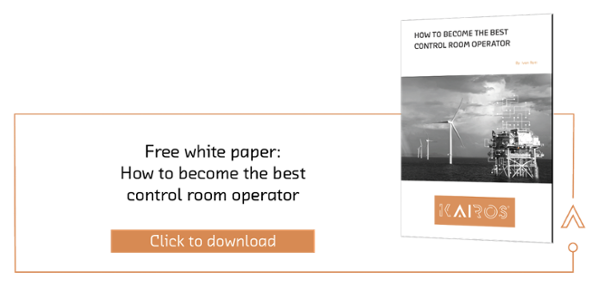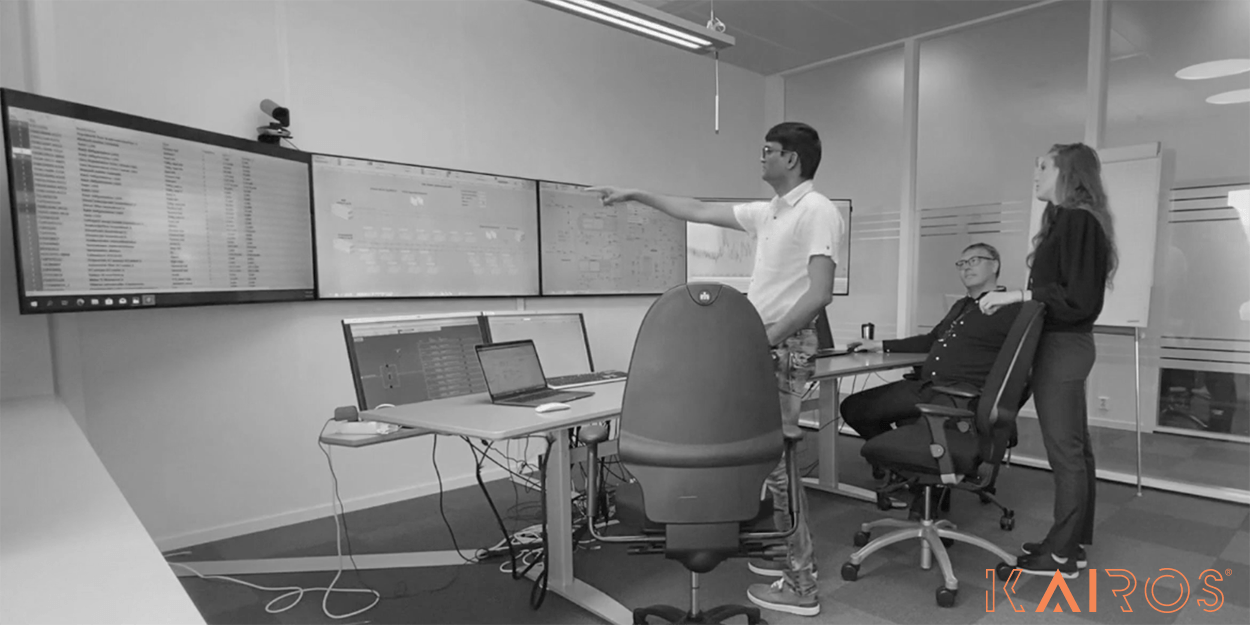An effective control room is crucial to ensure the safe and efficient operation of any plant. The amount of work in a control room is dependent on the size and complexity of the plant, and the level of automation. The control room responsibilities may vary based on the plant, but will generally cover the following main tasks:
- Monitoring the plant for safe and efficient operation
- Detecting and fixing problems
- Securing production and monitoring emissions
In general, it is the control room operator’s responsibility to take over control if there are incidents where the automatic control or safety system fail to maintain safe operation. There are many different factors that influence the performance of the control room and it is important to understand and recognize them to be able to manage performance.
Human factors in the design of the control room
The term human factors is often used to refer to the combination of the physical environment setup, how the work is organized, and the actual tasks to be performed. When we want to understand the performance and reduce errors, we need to consider all of these factors in combination.
Starting with the design of control rooms, physical factors such as workstation ergonomics, noise level, thermal comfort, and lightning, all play a key part of how well the operator performs. However, this is only the physical part of the design. Understanding the work tasks is vital to ensure that the control room is designed to reduce the risk of human error. The plant itself, including the automatic control system, should also be designed with ease of operations and maintenance as key factors. One of the standards to use when designing control rooms covering the complete design process is ISO-11064.
Information overflow
When incidents happen, alarms are triggered in the control and safety systems. This is the most common way of notifying the control room operator about the need for stepping in and taking action. Some assets may have thousands of configured alarms and challenges, such as poorly configured or maintained alarm systems, which often result in too many alarms sounding off at the same time, nuisance alarms, and a constant load on the operator. The number of systems to monitor is also a significant issue. The alarms are only symptoms, and to interpret the symptoms, the control room operator uses graphical process displays and historical trends. An average process plant may have hundreds of graphic displays. Clearly, this is a challenging task for even the most experienced control room operator. Clear guidelines on maximum operator workload and related alarm system performance may be found in EEMUA 191.
Operator fatigue
Being subject to a constant flow of information and having to understand reasons and possible consequences is stressful. At the same time, we know that making the wrong decisions may have serious consequences for individuals, the organization, and the environment. In the long run the situation may impact the operator´s mental and physical health. The cognitive demands behind an operators workload needs to be managed and one important element is understanding manning and staffing needs.
Changing operational modes
Some plants are designed to constantly support different operational modes. This is always the case in batch processing, but even continuous operation plants are subject to changing operational modes. Examples are using alternating process trains, duty/standby, equipment being maintained of fixed, or during start-up and shut down. Some plants may also be subject to frequent modifications. Any of these cases are challenging for the operator. Control room operators on a rotation may return to a plant that has been changed and behaves differently from last work-period. Understanding how the process is operating is vital to understand how to interfere. Even short breaks can lead to loss of situational awareness. This is why the shift hand-over is an important work-process to avoid incidents and accidents.
Lack of knowledge sharing
If we cover all the above challenges well, targeted information, proper maintained alarm systems, well designed graphics, good ergonomics in place, is this enough? Good processes and task analyses are used to improve the workplace. Still, we have to leave the actual understanding and action planning to the individual control room operator. If there is an operator training simulator available, they will have been able to run through difficult incident scenarios. The rest is down to each individual’s expertise and experience.
The best way to build experience is to be a part of the commissioning of the plant when it is newbuilt. Sadly enough, this is only possible for some of the operators, as new operators join along the lifetime of the workplace. Then the opportunity to learn from experience becomes more limited. We capture this experience in operational procedures, but how new operators are trained and can learn from other operators’ operational experience is vital to the safe and efficient operation of the plant.







